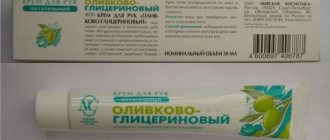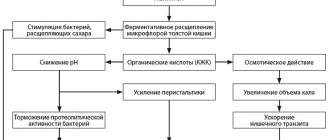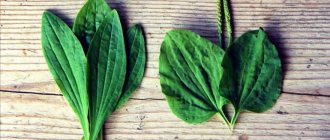Mustard plasters help speed up the treatment of colds, which are accompanied by cough, runny nose and other unpleasant symptoms. These time-tested products have a local irritating and warming effect. When using mustard plasters, blood circulation in tissues improves, and therefore their nutrition. Thanks to this, it is possible to speed up the healing process.
Nosological classification (ICD-10)
- J06 Acute upper respiratory tract infections of multiple and unspecified localization
- J18 Pneumonia without specifying the pathogen
- J22 Acute respiratory infection of the lower respiratory tract, unspecified
- J40 Bronchitis, not specified as acute or chronic
- M25.5 Joint pain
- M42 Osteochondrosis of the spine
- M54.4 Lumbago with sciatica
- M79.1 Myalgia
- M79.2 Neuralgia and neuritis, unspecified
- R07.2 Pain in the heart area
- T14.3 Dislocation, sprain and damage to the capsular-ligamentous apparatus of a joint of an unspecified area of the body
Indications
You can buy mustard plasters at a pharmacy without a prescription. The main indications for their use are the treatment of cough, which is a symptom of various colds. Mustard plasters are most often prescribed for the treatment of bronchitis.
They are also used as an anti-inflammatory and analgesic for the following pathologies, which are accompanied by pain of varying intensity and nature. This:
- Osteochondrosis. In this case, the intervertebral discs cease to function normally.
- Myositis. It develops due to damage to muscle tissue by inflammation or intoxication.
- Myalgia. Pathology occurs against the background of trauma, physical and psycho-emotional stress.
- Neuralgia. The disease is associated with nerve damage. Very often the provoking factor is hypothermia, infection and or intoxication.
Mustard plasters help relieve pain and inflammation from soft tissue bruises and sprained ligaments. When used, it is possible to speed up the recovery process.
Compound
Mustard plaster
| Plate | 1 plate |
| active substance: | |
| mustard powder | 1.1 g |
| contact gel lubricant for ultrasonic devices is used to fix the powder |
Mustard plaster package
| Powder for external use | 1 pack |
| active substance: | |
| mustard powder | 3.3±0.4 g |
Universal mustard plaster package
| Powder for external use | 100 g |
| mustard powder, premium and first grade | 24 g |
| a mixture of mustard cake and crushed mustard seed kernels | 76 g |
| (mustard cake with a particle size of 600-700 microns - 8 parts; crushed mustard seed kernels with a particle size of 600-700 microns - 2 parts) |
Mustard plaster with eucalyptus oil
| Powder for external use | 1 pack |
| mustard powder, premium and first grade | 24% |
| a mixture of mustard cake and crushed mustard seed kernels | 75% |
| (mustard cake - 8 parts; crushed mustard seed kernels - 2 parts; eucalyptus oil - 1%) |
Mechanism of action
The main active component is considered to be essential mustard oil, which is released after the powder is wet. In the area of contact with the skin, chemical irritation of the receptors is observed, then a local inflammatory reaction occurs. The process is accompanied by dilation of blood and lymphatic vessels, hyperemia occurs, the temperature rises, and mild itching and burning appear.
Under the influence of the active substance, adrenaline is released, stimulating the functioning of many organs. As a result of the activation of phagocytes, harmful microorganisms die, dead and dying cells are separated. Due to increased local blood circulation, inflammatory reactions decrease, intoxication of the body occurs, and pain disappears.
The healing properties of the substances contained in mustard powder:
- synargin in black mustard/sinalbin - in white mustard - regulate the release of adrenaline;
- phytosterols, unsaturated fatty acids - bactericidal properties;
- Myrosin - antiseptic properties.
Description of the dosage form
Mustard plaster is a rectangular sheet of paper 8x12.5 cm, covered with an even layer of mustard yellow powder with dark inclusions and a characteristic odor.
Mustard plaster package - yellow mustard powder with dark inclusions, free of lumps, with a specific odor characteristic of mustard powder, placed in a bag measuring (13.2 × 9.5) ± 0.5) cm, made of heat-sealable, non-soaking paper, porous on both sides or made of heat-sealable, non-wetting, porous paper on one side and a combined paper-based material on the other, divided by seams into four cells, measuring (5.7 × 3.7) ± 0.3) cm.
Universal mustard plaster is a mustard mixture of grayish-yellow, yellowish-brown color with dark inclusions, with an odor specific to mustard cake.
Mustard plaster-package with eucalyptus oil is a mustard mixture from light yellow or grayish-yellow to yellowish-brown or brown with darker inclusions, with an odor specific to mustard cake and eucalyptus oil.
Directions for use and doses
Locally.
Mustard plaster
Mustard plaster is dipped in water heated to a temperature of 37 °C for 15–20 s, then applied to the skin. To enhance the effect, the mustard plaster is covered with PE film and pressed tightly to the body with an elastic bandage or other bandage. The procedure time is 5–20 minutes (until persistent redness appears), in children - 2, 3, 5 or 10 minutes, depending on the age of the child, the irritant effect and the individual sensitivity of the patient. If you feel a strong burning sensation, you need to loosen the pressure of the mustard plaster to the body for a while or remove it.
Mustard plaster package
Before use, the mustard plaster package is shaken horizontally to distribute the powder evenly among the cells, dipped in water heated to a temperature of 37 °C for 15–20 s, then applied to the skin with the porous side. To enhance the effect, the mustard plaster package is covered with PE film and pressed tightly to the body with an elastic bandage or other bandage. Procedure time: from 5 to 20 minutes (until persistent redness appears); in children - 2, 3, 5 or 10 minutes, depending on the age of the child, the irritant effect and the individual sensitivity of the patient. If you feel a strong burning sensation, you need to loosen the pressure of the mustard plaster package to the body for a while or remove it.
Universal mustard plaster package
The universal mustard plaster package is lowered, without changing the horizontal position, into water heated to a temperature of 37 °C for 15–20 s, then applied to the skin. To enhance the effect, the mustard plaster is covered with PE film and pressed tightly to the body with an elastic bandage or other bandage. The procedure time is 5–20 minutes (until persistent redness appears), in children - 2, 3, 5 or 10 minutes, depending on the age of the child, the irritant effect and the individual sensitivity of the patient. If you feel a strong burning sensation, you need to loosen the pressure of the mustard plaster to the body for a while or remove it by rinsing the area of skin to which it was applied with water.
Mustard plaster with eucalyptus oil
Before use, the mustard plaster package (4 cells) is shaken to distribute the powder evenly throughout all cells of the package. Place the bag in warm water for 15–20 seconds, then apply it to the skin with the porous side of the paper. Cover with a dry, thick cloth, press tightly to the body and leave for 2, 3, 5 or 10 minutes (until persistent redness appears), depending on the patient’s age and skin sensitivity. If you feel a strong burning sensation, you need to loosen the pressure of the mustard plaster to the body for a while or remove it.
Antibacterial therapy on an outpatient basis
Treatment of pneumonia in adults at home is possible in patients of two groups that differ in the causative agent of the infectious disease and the tactics of antibacterial therapy.
The first group included patients without concomitant pathology under the age of 60 years. In them, an adequate clinical effect can be obtained by using antibiotics for oral administration. Doctors at the Yusupov Hospital provide monotherapy to these patients with amoxicillin or macrolide antibiotics. In case of intolerance to β-lactams or suspicion of an atypical nature of the disease, preference is given to macrolides. Fluoroquinolones are used as alternative drugs.
The second group included elderly people and patients with concomitant diseases that are risk factors for poor prognosis in pneumonia. This:
- chronic obstructive pulmonary disease;
- diabetes;
- chronic renal or liver failure;
- heart failure;
- body weight deficiency;
- alcoholism and drug addiction.
Patients in this group obtain adequate clinical benefit when prescribed oral antibiotics. In the presence of concomitant diseases in the development of pneumonia in this category of patients, the likelihood of the presence of gram-negative microorganisms increases. Therefore, the use of amoxicillin clavulanate is indicated. Due to the high probability of the chlamydial nature of pneumonia, patients are treated with β-lactams and macrolides. An alternative to combination therapy is the use of respiratory fluoroquinolones (levofloxacin, moxifloxacin).
The advantage of parenteral antibiotics over oral administration in an outpatient setting has not been proven, so they are administered intramuscularly only in exceptional cases. For patients over 60 years of age in the absence of concomitant diseases, ceftriaxone is administered intramuscularly. The drug can be prescribed in combination with macrolides or doxycycline.
An initial assessment of the effectiveness of treating pneumonia at home is carried out 48–72 hours after the start of treatment, during a re-examination by a doctor at the Yusupov Hospital. The main performance criteria that allow doctors to conclude that there is positive dynamics are:
- normalization of temperature;
- reduction of symptoms of intoxication;
- reducing the intensity of shortness of breath and other symptoms of respiratory failure.
If the patient’s symptoms progress or high fever and signs of intoxication persist, the treatment is considered ineffective, the tactics of antibacterial therapy are reviewed, and the advisability of hospitalization is re-evaluated. If there is no adequate effect when treating with amoxicillin, it is replaced with a macrolide antibiotic.
In case of mild pneumonia, antibiotics are discontinued if the body temperature is stable for 3–4 days. With this approach, the duration of treatment is from 7 to 10 days. In patients with mycoplasma or chlamydial pneumonia, the duration of therapy is 14 days.
The persistence of individual clinical, laboratory or radiological signs of pneumonia is not an absolute indication for continued antibiotic therapy or its modification. In the overwhelming majority of patients with pneumonia, resolution occurs independently or under the influence of symptomatic therapy. If clinical, laboratory and radiological symptoms of pneumonia persist for a long time, doctors at the Yusupov Hospital carry out differential diagnosis with diseases such as tuberculosis, lung cancer, and congestive heart failure.
Make an appointment
Release form
Mustard plaster
Powder for external use, 1.1 g. Applied on a paper plate 8x12.5 cm. 2, 5, 10, 15 or 20 mustard plasters in a PE (or polypropylene) bag or wrapped with a label and placed in a film bag.
Mustard plaster package
Powder for external use. The mass of the powder in one mustard plaster package is (3.3±0.4) g (from 2.9 to 3.7). 10, 15, 20 mustard plasters packages in a pre-labeled PE bag, sealed hermetically by heat sealing. 10, 15, 20 mustard plasters in a PE bag, hermetically sealed, packed in a pre-labeled cardboard box.
Universal mustard plaster package
Powder for external use. In a paper bag, divided by seams into 4 cells, 3 g. 2, 5, 10, 15 or 20 universal mustard plasters in a protective bag.
Mustard plaster with eucalyptus oil
Powder for external use. In a paper bag, divided by seams into 4 cells, 3 g. 10 or 20 mustard plasters with eucalyptus oil in a protective bag.





